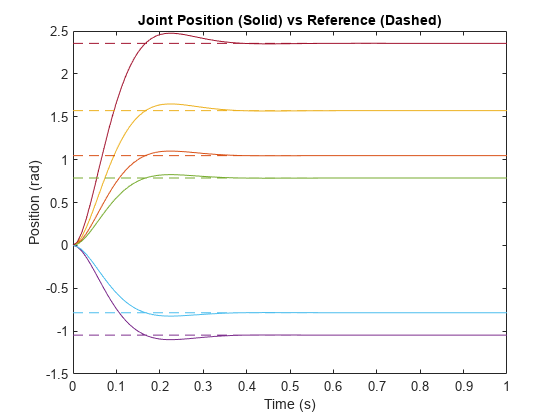updateErrorDynamicsFromStep
Update values of NaturalFrequency and
DampingRatio properties given desired step response
Syntax
Description
updateErrorDynamicsFromStep(
updates the values of the motionModel,settlingTime,overshoot)NaturalFrequency and
DampingRatio properties of the given jointSpaceMotionModel object given the desired step response.
updateErrorDynamicsFromStep(
updates the motionModel,settlingTime,overshoot,jointIndex)NaturalFrequency and DampingRatio
properties for a specific joint. In this case, the values of SettlingTime
and Overshoot must be provided as scalars because they apply to a single
joint.
Examples
Input Arguments
References
[1] Ogata, Katsuhiko. Modern Control Engineering 4th ed. Englewood Cliffs, NJ: Prentice-Hall, 2002.
Version History
Introduced in R2019b
